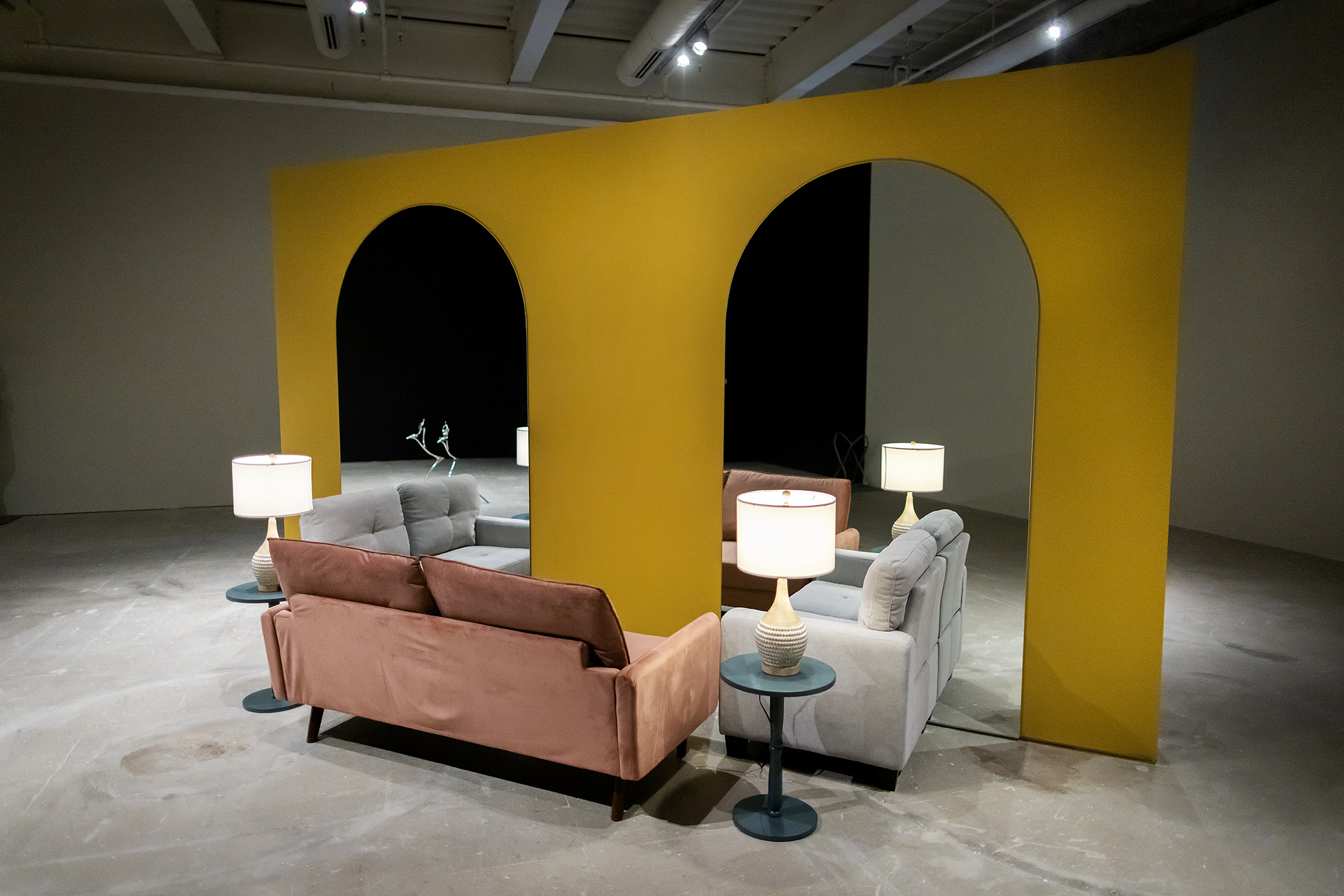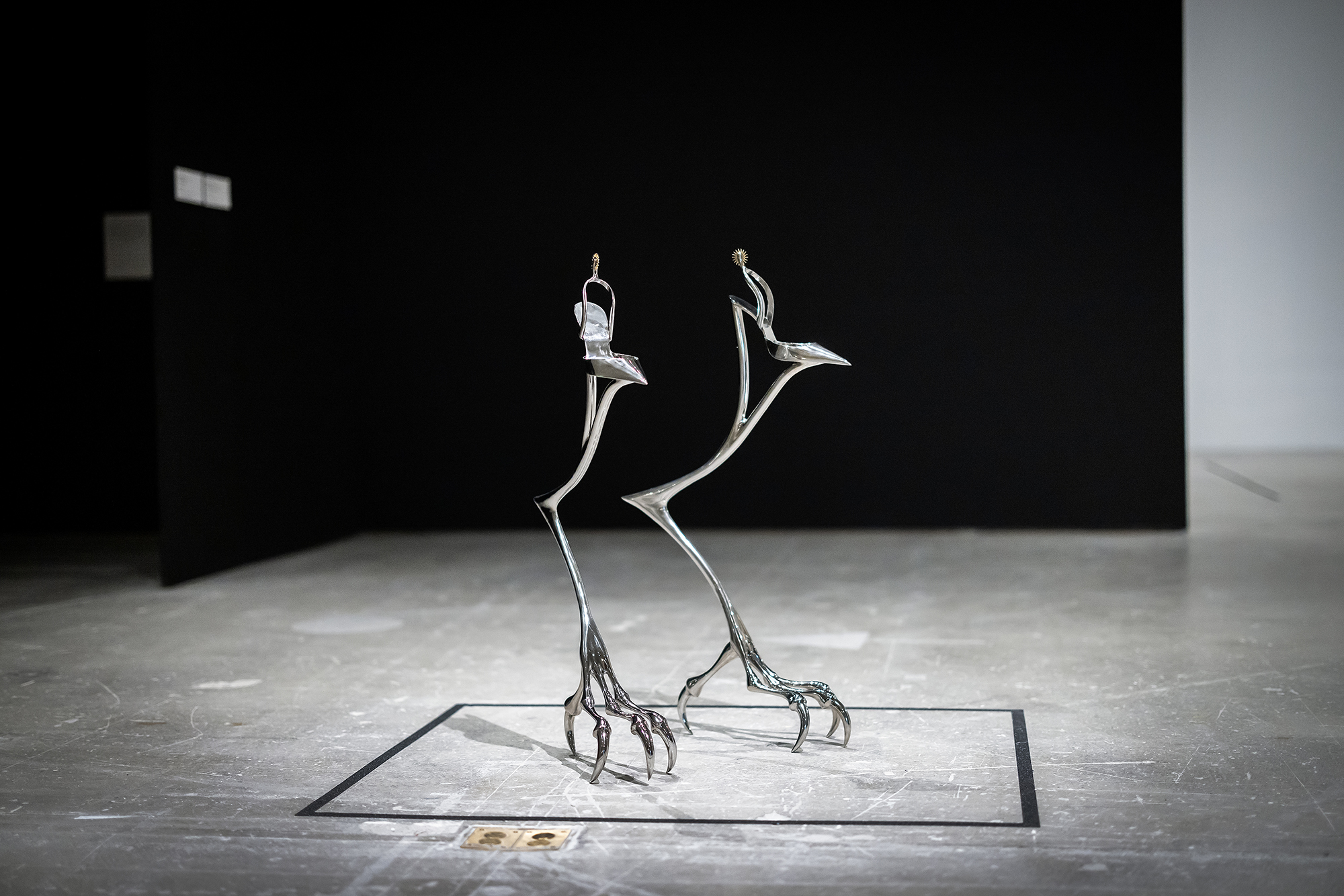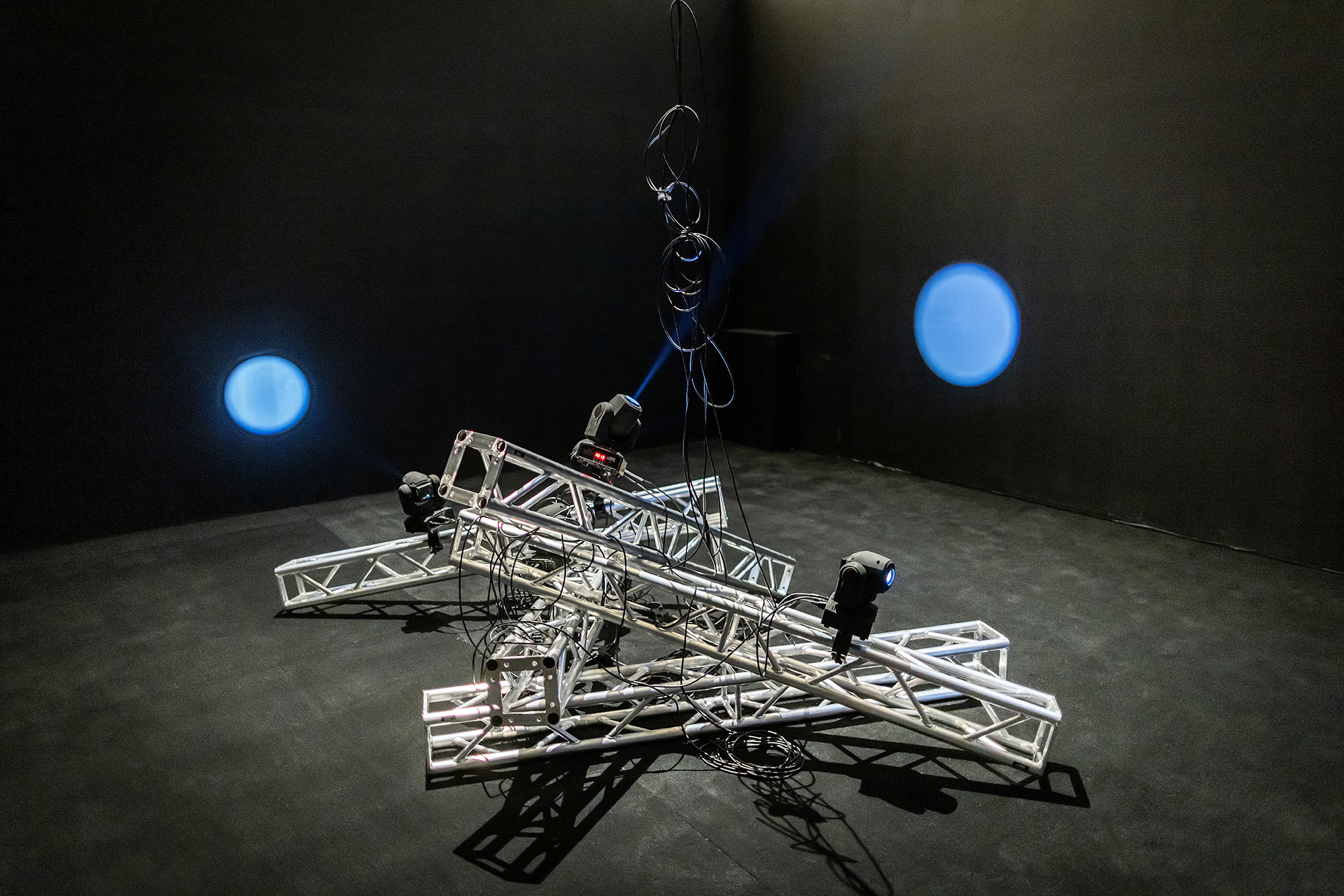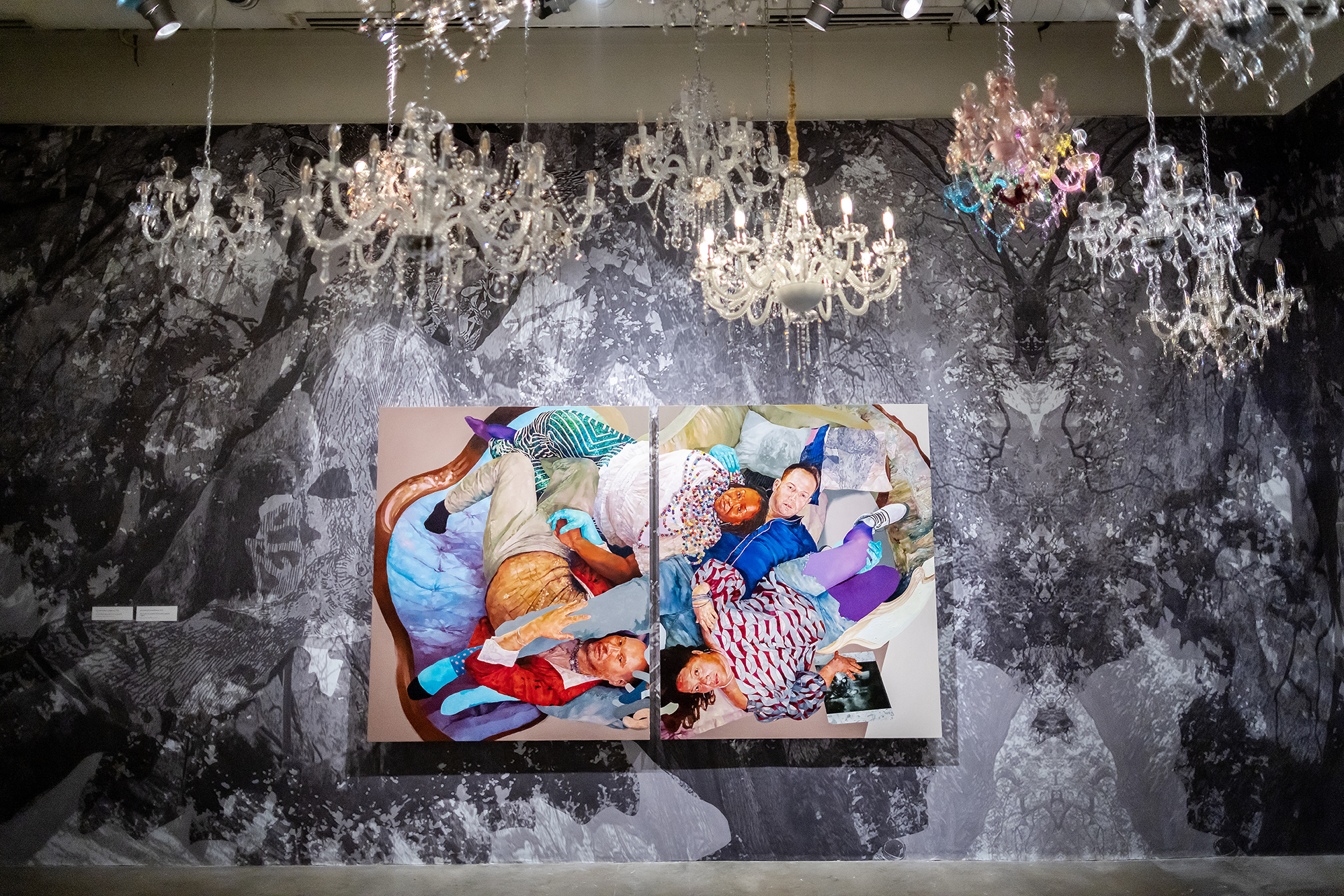
This fall, the Institute of Contemporary Art introduces two brand-new exhibits, on view through Dec. 17: “When the Children Come Home,” by painter and performance artist David Antonio Cruz; and “Moveables,” featuring five artists who rethink functional design and its relationship to the body.
“A lot of these artists are using metaphors of chairs, maybe the apparatus of a stage set, to think about how they affect lived experience,” says Alex Klein, who co-curated the “Moveables” exhibit alongside Cole Akers. “And I think with all of these artists, there’s also a sociopolitical backdrop.”
The exhibit takes its name from a dated term for property in a dwelling that isn’t fixed in place, says Klein, and doubles to imply movement in the furniture that conveys a sense of theater.
“It suddenly becomes about animation,” she says. “And whether the work itself is animating and performing, or you become the performer in relationship to it, it was a simple way to say ‘furniture stuff’ and ‘performance’ in one place.”
The show’s artists include Jes Fan, Nikita Gale, Hannah Levy, Oren Pinhassi, and Ken Lum. Lum is the Marilyn Jordan Taylor Presidential Professor Chair of Fine Arts in the Weitzman School of Design; it’s his first time showing work at the ICA and he was an honoree at ICA’s benefit this past spring.
Conceptually, the curators knew they wanted to engage artists who, Akers says, “are thinking about functional design.”
The exhibit takes up the first floor and can be approached from either the right or left side upon entering, cycling through a semicircle. It is, Klein stresses, a primarily sculptural exhibit meant to be “experienced” in the body and felt instinctually.
In Fan’s work, there is a blurring between distinctions of race, gender, animal, and human. Pinhassi’s pieces, meanwhile, speak to concepts like wet and dry, bodily space and its relationship to architecture, and Gothic or pre-modern architecture. Levy uses cold metals that she fabricated herself and conjure gendered critiques of high modernism with a focus on bodily awareness. Gale presents a timely work—albeit, unintentionally—with lighting rigs that animate to the soundtrack of the late Tina Turner’s “Private Dancer,” addressing questions of spectatorship and tension between searchlight and spotlight.
Lum’s furniture pieces illustrate concepts of movement and alienation. Lum first began creating furniture art in the 1970s and, he says, this side of his practice has grown in demand in recent years. The arrangement of the furniture is meant to elicit a feeling of being closed in—quite the opposite of what these arrangements are meant to do, which is join people together for conversation. As a kid, Lum says, he was struck by furniture arrangements in Sears catalogs.
“There’s a logic to how furniture is configured and organized in domestic spaces, which is about increasing the intimacy factor by having more enclosure, and the closest to this [outside] of full enclosure might be a sunken living room of rich LA people,” remarks Lum.
“But there’s always access points, whereas in mine, the access point is not there,” he explains. “So, by denying the access point, I invert the conversation space—it’s denied to you, and the conversation space becomes the perimeter of space outside the conversation space.”
He describes it as the “hidden sociability of minimal art.” The inclusion of mirrors, he adds, enhances the sense of inclusion in the work, and in the case of the arrangement with arched mirrors, encourages spectators to view the pieces from different angles and move around them.
Descriptions of the work he’s heard since the opening, he says: “off-putting,” “weird,” “strange,” “discomforting”—“Someone even said it’s ‘slightly yucky,’” he says, with a laugh.
But they all expressed liking the work, he clarifies, and he takes the uncomfortable reactions as a sign he’s doing his job well.
On the second floor is Cruz’s exhibit, featuring 20 pieces that are a mixture of new works for the show and others on loan, comprising his earlier work. Most are portraits that speak to themes of chosen families and queer communities. A theme that took hold in the making of the show, says curator Monique Long, comes Long’s shared history with Cruz, although they only met later in life: They both grew up in a neighborhood in North Philadelphia, and immediately bonded over ideas of shared experiences and shared lifestyles. This homecoming is reflected more literally in a large-scale drawing that has a map of Cruz’s specific neighborhood in North Philadelphia.
In one of Cruz’s new works, he’s portrayed in a self-portrait alongside a childhood friend from North Philadelphia.
Elsewhere are landscapes, triptychs of abstract portraits, and a haunting self-portrait from 2007 picturing a symbolic death. Several portraits are double portraits that convey beauty, disorientation, intimacy, and more.
“There’s a lot of beauty as part of the exhibition, particularly as part of the project space that is so sumptuous, and we worked with a lot of intention to think through and have foresight about how people respond to the work,” says Long. “Even with the fabric of the seating is custom, with references to David Antonio’s aesthetic, and his visual practice, so my hope is people will take time to enjoy and understand the details.”
“Moveables” and “When the Children Come Home” are on view at the ICA through Dec. 17. An opening celebration will take place on Friday, Sept. 8, and is open to all.










